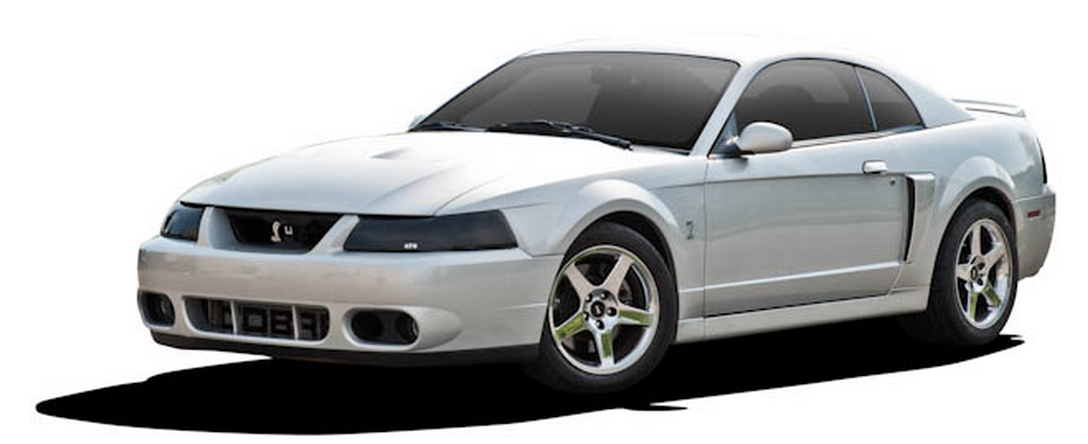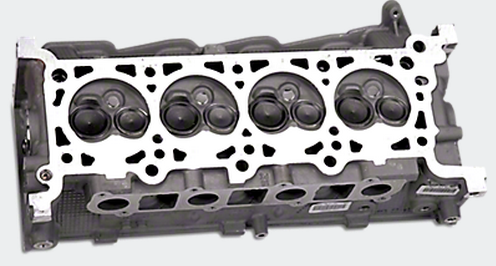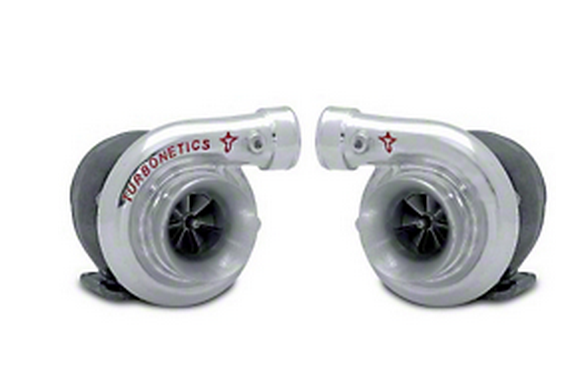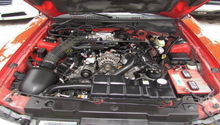Ford Mustang GT 1996-2004: Engine Performance Modifications
You can never have too much power for a Mustang GT. Several engine performance modifications are available to pump up the Ponies on your Mustang.
This article applies to the Ford Mustang GT (1996-2004).
There are several ways to boost the power in your Mustang GT. The general rule of thumb is that more horses will cost you more Benjamins—no surprise there. In fact, one of the biggest power boosts comes from a supercharger that can run over $5,000—ouch. There are many other options that can produce a more modest power increase without costing you an arm and a leg. Let's take a look at a few engine performance upgrades for your GT.
Engine Performance Upgrade Options
Bolt-on options like cold air intakes and headers can produce some performance boosts, but the big jumps come from major projects like replacing the cylinder heads, cams or adding a turbo or supercharger. These are not for the faint of heart, as they involve some serious mechanical work, and installing them incorrectly could actually damage your engine. If you decide to make the investment in any of these upgrades, sometimes a professional installation is the best insurance policy for getting the job done right the first time. Let's take a look at each of these upgrades in more detail.

Upgrading Cylinder Heads

DIY Cost – $350-$900
Professional Cost – $750-$2,000
Skill Level – Hard; it involves extensive engine work.
One of the best ways to increase power in your engine is to increase the airflow through the intake. Stock cylinder heads can be somewhat restrictive, so replacing them is a great way to add horsepower to your engine.
Keep in mind that upgrading the heads often involves adding a new camshaft, valve springs, retainers, and other components, making this job costly in both parts as well as labor.
When all of the bolt-on options are exhausted, this may be the only one left to gain some significant performance increases. Recommended for increase in airflow to boost up power.
Camshaft Upgrade

DIY Cost – $350-$900
Professional Cost – $750-$2,000
Skill Level – Hard; it involves extensive engine work.
There are many reasons to upgrade the camshaft in your Mustang GT. Other performance modifications often go hand in hand with a new camshaft, as in the case of a new cylinder head mentioned in the previous section.
The camshaft is the central traffic controller in the combustion process in the engine. It controls the amount of time the valves stay open and closed, as well as any overlap time during which both the intake and exhaust valves remain open.
A cam profile with a longer duration can keep the intake valve open longer, adding serious performance boosts, especially when used with a supercharger, which is our next topic of discussion. Recommended for its ability to keep the intake valve open for a longer duration.
Supercharger and Turbo Chargers

DIY Cost – $5,000-$6,700
Professional Cost – $5,500-$7,000
Skill Level – Hard; it requires extensive engine modification to integrate.
You've heard about them a hundred times and you know you want one, but what exactly do turbo and superchargers do?
Both chargers use forced induction to basically cram more air into the engine to generate more power. While new cylinder heads will create larger pathways for air to flow, the chargers will pressurize the air and allow more to "fit" in the same amount of space.
They differ mainly in how they perform their magic. Superchargers are connected to the engine's crankshaft by a belt, gear, shaft or chain, so they compress the air using some of the engine's power. The turbo charger uses the engine's exhaust to power its compression mechanism, so there is no parasitic effect on the engine. The advantage of the supercharger is that compression occurs immediately, while the turbo charger requires some time to spin up, resulting in a lag before you feel the "boost."
Performance gains are significant, with even average power increases of 50%, but they do come at a price. Some models heat the air so hot that they require an intercooler to bring the temperature down and keep it operating efficiently.
Installation is no walk in the park either, as neither is a simple bolt-on project. However, once you step on the gas, the skid marks on the road might just make you forget the ones in your wallet. Recommended for drivers who have the budget.
Featured Video: Forced Induction - Supercharger vs. Turbocharger
Related Discussions
- 4.6 Cam Install - MustangForums.com
- 4.6 Head and Cam Swap - MustangForums.com
- Best Turbo for 4.6 2V Motor - MustangForums.com
- Supercharging My GT - MustangForums.com






